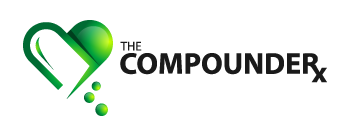 Estrone (E1) is the estrogen most commonly found in increased amounts in postmenopausal women. The body derives it from the hormones that are stored in body fat. Estrone may do the same work that estradiol does, but it might be considered weaker in its effects. Estrone is rarely used as a supplement.
Estrone (E1) is the estrogen most commonly found in increased amounts in postmenopausal women. The body derives it from the hormones that are stored in body fat. Estrone may do the same work that estradiol does, but it might be considered weaker in its effects. Estrone is rarely used as a supplement.
Estradiol (E2) the principal estrogen found in a woman’s body during the reproductive years. It is produced by the ovaries. Estradiol may be very effective for the symptomatic relief of hot flashes, genitourinary symptoms, osteoporosis prophylaxis, psychological well-being and reduction of coronary artery disease.
Because it is much more potent than estriol, it might be more effective for symptomatic relief than estriol. When estradiol is replaced using a parenteral (sublingual, pellet implant, percutaneous, or transdermal) route, it may not be subject to first-pass metabolism by the liver, and therefore does not produce high levels of estrone.
Estriol (E3) is the weakest of the three major estrogens. In fact, it is 1,000 times weaker in its effect on breast tissue. Estriol is the estrogen that is made in large quantities during pregnancy and has potential protective properties against the production of cancerous cells.
An important article in the 1966 Journal of the American Medical Association by H.M. Lemmon, M.D., reported a study showing that higher levels of estriol in the body correlate with remission of breast cancer. Dr. Lemmon demonstrated that women with breast cancer had reduced urinary excretion of estriol. He also observed that women without breast cancer have naturally higher estriol levels, compared with estrone and estradiol levels, than women with breast cancer. Vegetarians and Asian women have high levels of estriol, and these women are at much lower calculated risk of breast cancer than are other women. Estriol’s anti-cancer effect is probably related to its anti-estrone properties it blocks the stimulatory effect of estrone by occupying the estrogen receptor sites on the breast cells.
Estriol is the estrogen that may be most beneficial to the vagina, cervix and vulva. In cases of vaginal dryness and atrophy, which predisposes a woman to vaginitis and cystitis, topical estriol may be the most effective and safest estrogen to use. Because of this, estriol might be better than estradiol for the treatment of urinary tract infections.
None of the American drug products contains Estriol, so it is not available in most drug stores, although it has been used widely in Europe for over fifty years.
Combinations:
Biest is a combination of two estrogens: estriol and estradiol. It is most commonly found in a ratio of 80:20, estriol to estradiol. This combination might allow for all of the protection of estriol, while potentially providing the cardiovascular and osteoporosis benefits and vasomotor symptom relief of estradiol.
Triest is a combination of three estrogens: estriol, estradiol and estrone. It is most commonly found in a ratio of 80:10:10, estriol, estradiol, and estrone. This combination is no longer a popular formulation. Estrone (E1) is removed.
